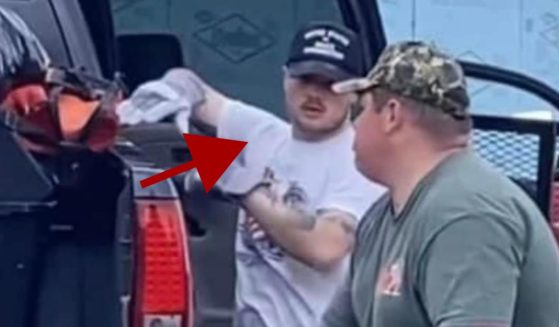Pattern of Location Pings Revealed on Alleged Idaho Murderer's Phone - Was He Stalking Them?
Our society is so saturated in technology, it has become invisible to us. It’s similar to the brain teaser about whether fish know they are wet. We are so surrounded and supported by technology, we don’t even notice it. We take it for granted.
It takes an extreme act to bring about consciousness of how tracked, transmitted, broadcast and stored our every move can be these days.
The brutal murders of four University of Idaho college students might end up being solved because of this web of omnipresent electronic communications. Technology might even provide evidence of a motive, proving that the prime suspect was stalking at least one of the victims beforehand.
The New York Post reported cellphone records put the alleged killer in the vicinity of the murders both before and after the crime.
Washington State University criminology graduate student Bryan Kohberger was arrested in Pennsylvania on Dec. 30 and charged with murder in the Nov. 13 deaths of four college students in Moscow, Idaho.
Authorities believe Madison Mogen, 21, Kaylee Gonçalves, 21, Xana Kernodle, 20, and Ethan Chapin, 20, were stabbed in their sleep by a home invader.
As ABC News reported on Nov. 30, Goncalves told family and friends she had a stalker.
A town in Idaho is on edge as more questions arise in the ongoing investigation in the murder of four college students. @KaynaWhitworth has the latest. pic.twitter.com/vUU2TqrSoK
— Good Morning America (@GMA) November 30, 2022
Investigators revealed Kohberger’s cellphone location ping data showed he had been near the house where the murders took place at least 12 times in the months leading up to the brutal crime, the Post reported.
During the early morning hours of Nov. 13 when the murders took place, Kohberger’s phone was switched off between 2:47 a.m. and 4:48 a.m., concealing its location. Then Kohberger’s cellphone showed he revisited the area near the house between 9:12 a.m. and 9:21 a.m.
Perhaps that fulfilled the old saying that a criminal always returns to the scene of the crime.
There is other evidence tying Kohberger to the murders, according to authorities.
As Ben Mogen, the father of victim Madison Mogen, said to The Spokesman-Review in Spokane, Washington, “From the very beginning, I’ve known that people don’t get away with these things these days. There’s too many things that you can get caught up on, like DNA and videos everywhere.”
On Thursday, court documents said Kohberger’s DNA was found on a knife sheath left at the scene of the murders.
In addition, the probable cause affidavit prepared by Idaho officials shows all the ways technology captured the movements of the victims and the suspect on the night of the murders.
Goncalves and Mogen appeared earlier in the evening in video footage from a bar and later at a food truck. Kernodle received a DoorDash order around 4 a.m. and was still using her TikTok phone app shortly afterward.
At 4:17 a.m., a security camera on a separate residence less than 50 feet from Kernodle’s room picked up sounds of possible voices, whimpering, a thud and a barking dog. Details like this led to an estimate of the time of the murders as between 4 a.m. and 4:25 a.m.
During the investigation, law enforcement used this time frame to conduct a “video canvass,” obtaining surveillance videos from homes and businesses around the crime scene and vicinity from both before and after the murders.
The footage reviewed led to the identification of a white sedan with no front license plate making multiple passes through the quiet residential area. It was seen from various cameras leaving the area and tracked after the time of the murders heading in the direction of Kohberger’s home. This became “Suspect Vehicle 1.”
In early December, Moscow police announced, “Detectives are interested in speaking with the occupant(s) of a white 2011-2013 Hyundai Elantra, with an unknown license plate.”
Kohberger changed the license plates of his 2015 white Hyundai Elantra from Pennsylvania plates to Washington state plates five days after the murders. The affidavit notes Pennsylvania did not require the front license plate on its car registrations.
On Dec. 15, a police bodycam caught a panicked-looking Kohberger in his Elantra during a traffic stop.
Lmao look at the fear pic.twitter.com/UWYhTGJazR
— Matt Horner (@Matt_Horner_QL) January 3, 2023
It is good to think that all this technological documentation could help bring an alleged killer to justice.
At the same time, it is easy to see how such a network of casual surveillance could be abused.
It will not be easy to avoid injustice when we can always be watched with such little effort. The same easily accessible technology that is so freeing is also a kind of prison, even for those who do not deserve it.
Truth and Accuracy
We are committed to truth and accuracy in all of our journalism. Read our editorial standards.












